37 years ago, on the 3rd February, the great Egyptian diva and songwriter – Umm Kalthum – died, well into her 70s. Last night BBC Worldservice aired a brief program about her, which you can download here.

A young Umm Kalthum
This remarkable woman, born in a small village in the Delta (northern Egypt), rose to become the most beloved singer of Egypt and is widely considered to be the greatest singer in the Arab world. She was a living legend, her classical Arabic songs often lasted three hours or more – during which the audience would respond to her singing – an exchange called ‘tarab’ :
“Tarab is a concept of enchantment… usually associated with vocal music, although instrumental music can produce the same effect, in which the listener is completely enveloped in the sound and the meaning in a broad experiential sense, and is just completely carried away by the performance.”
She was a perfectionist – in her music, her business dealings, and in life in general. Still today, on the first Thursday of every month in Egypt, her recordings are played on the radio.
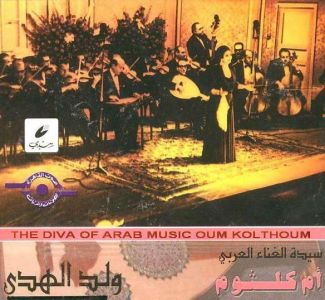
Performing with her orchestra
Respect and love for her was such that at her funeral, over a million people came to follow the cortège:
On 4 February, Umm Kulthoum’s body was prepared for burial. Again, the outpouring of public emotion took El-Dessouqi by surprise. “People took the coffin from us and left the route we had designated. I rushed to the burial grounds in Basatin and the police officers were calling me every few minutes to tell me, ‘The coffin is now in such and such a place,’ until they finally brought her to be buried.”
Source: Mohamed El-Dessouqi – Until the very End

Funeral procession of Umm Kalthum in Midan Tahrir
One of the many tributes written for her:
The advantage of memory, here, is its capacity to act as a sieve, retaining only the very best moments: now I can see her, the throat swelling as her pure voice rushes through in song, her arms stretched out to encompass the last notes as they leave her, soaring into the air. “You are my life”[1]: this is what she sings; “what I saw, before my eyes laid eyes on you: a whole life wasted, how can it be counted as my life?”
The lines of her face are taut, like the strings of the orchestra that frames her. Sometimes they cross, like the violinist’s bow across the chords; then they curve, like a harp, or a tambourine.
The conductor has lifted his baton; she is a lute, a violin, preparing to sing, her lungs filled to bursting with the pure oxygen of music. The qanun sings to her, a hymn of passion and temptation, and she replies.
Her dress is embroidered in rhythmic patterns that take up the music’s theme, echo it, rise and fall between the urgent, persistent strains of the Voice. She returns to the refrain, holds it, repeats it, differently every time: there is infinite variety in each eternal harmony. Bubbles of sound rise and hover; there is no use waiting for the explosion, for it will not come.
There is a secret here, in the fluttering hands, the face like a pale full moon raised to the heavens, scrutinising the sky for signs of faith. What it is, I cannot say. Everyone knows it. It sings for itself.
Source: Georges Bahgory, Contemplating Harmony
[1] ‘Inta umri’ ( You are my Life) one of her most famous songs
Of her voice, it is said that Kalthum:
… had a contralto vocal range. It is known that she had the ability to sing as low as the second octave, as well as the ability to sing as high as between the seventh and the eighth octaves at her vocal peak; yet she also could easily sing over a range surpassing two octaves near the end of her career. Her ability to produce approximately 14,000 vibrations per second with her vocal cords, her unparalleled vocal strength (no commercial microphone utilized for singing could withstand its strength, forcing her to stand at a 1- to 3-meter radius away from one), and her voice surpassed convention arguably made her one of the most incomparable voices in the world. Her ability and capability to sing every single Arabic scale made her one of only five women in the history of the Arab world to be able to do this…
Source: Wikipedia

Umm Kalthum performing. Always she sang with a handkerchief.
“She is the lady of ladies, the very symbol of Egypt, not just ‘a woman’. Of course,” she says, in a different tone now, “Umm Kulthoum is also a simple Egyptian who grew up in the countryside but managed to rise above the most prestigious palaces and castles. For me, no one — not even a princess or a queen — will ever be like Umm Kulthoum. I mean, there are plenty of princesses. But the symbol, the embodiment of Egypt, is Umm Kulthoum alone.”
Source: al-Ahram newspaper
Here are a few links to videos:
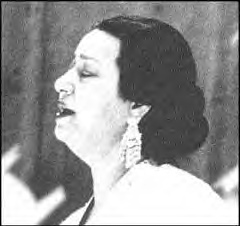




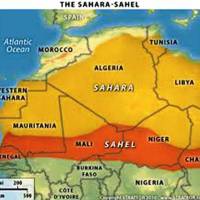
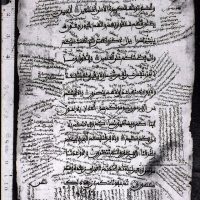




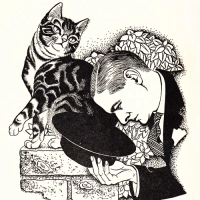

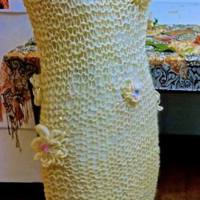













Reblogged this on DIANABUJA'S BLOG: Africa, The Middle East, Agriculture, History and Culture and commented:
A lovely women!
LikeLike